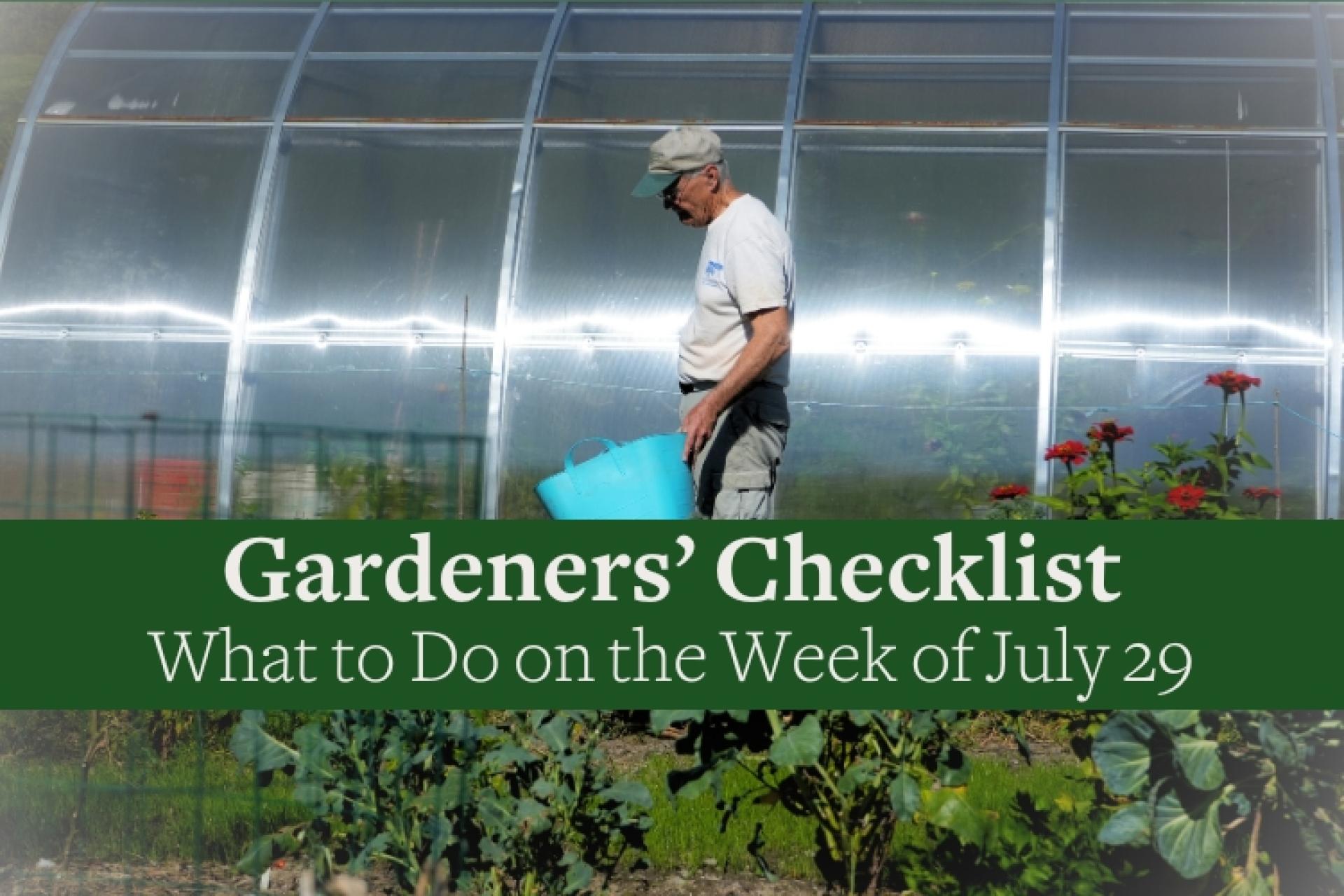You are here
Gardeners Checklist: Here Is What to Do on the Week of July 29
Gardeners Checklist: Here Is What to Do on the Week of July 29
By Ron Kujawski
* Snip or pinch off any new flower buds that form on plants of large-fruited tomato varieties from this point on. Any fruit set from these flowers are not likely to mature before the first frost. Small fruited varieties such as plum or cherry tend to develop more quickly and can be spared the indignity of being pinched for another week. Do not remove foliage from tomatoes to hasten ripening. That simply exposes the fruit to possible sunscald.
* Begin digging potatoes as soon as the leaves and stems die back. Early varieties such as ‘Red Norland’ and ‘Yukon Gold’ should be ready for harvest. Store the potatoes in a dark and warm (65 to 70 degrees F) place for a week or two to allow for bruises to heal. Then store the potatoes in a dark but cool spot with high humidity, such as in a corner of the basement.
* Make a map of the vegetable garden. This’ll keep you from getting lost when weeding. Just kidding. A map or sketch of this year’s planting scheme will help when rotating crops next year. Crops of the same group or family should not be planted in the same area for at least two years.
* Look along the edges of the property where the “weeds” grow for flowers to cut for table arrangements. Just a quick walk along the perimeter of our yard resulted in a bouquet of goldenrod, black-eye-Susan, yarrow, Joe-Pye weed, ox-eye daisy, Queen Anne’s lace, and purple coneflower. Okay, I won’t win a blue ribbon at the local flower show but my bouquet did add some cheer (laughs?) to our home.
* Start grooming houseplants that are vacationing outdoors since they’ll need to be moved back indoors by the end of August. Snip off browned and diseased leaves, and carefully inspect plants for evidence of insects and spider mites. Always look on the underside of leaves since that’s a favorite haunt for many pests. A forceful spray of water every few days will dislodge some pests but if by mid-month they are still there apply a pesticide labeled for use on houseplants. There are many organic products to choose from.
*
Most gardeners will pull up spent vegetable plants from the garden and either discard them or toss them onto the compost pile, hopefully the latter. I was doing this last week with the remnants of our pea crop. While doing this, it occurred to me that these plants are loaded with plant nutrients which, when the plants decay, are released into the soil and act as fertilizer. The roots of peas and beans in particular are rich in nitrogen based compounds. So, why not just leave the plants in the garden to decay rather than hauling them to the compost pile. This is not an original idea — few of my ideas are. This is the basis for a technique called sheet composting whereby garden debris and even scraps of vegetables from the kitchen are spread over the garden and then tilled into the soil. A variation of this is called trench composting. In this case, a trench about one-foot deep is dug and garden debris is deposited into the trench and covered with soil. By next spring, the organic debris will have decayed and increased the fertility of the soil in time for a new gardening season.
Ron Kujawski began gardening at an early age on his family's onion farm in upstate New York. Although now retired, he spent most of his career teaching at the UMass Extension Service. He serves on Berkshire Botanical Garden’s Horticulture Advisory Committee. His book, Week-by-Week Vegetable Gardener’s Handbook, is available here.
Help Our Garden Grow!
Your donation helps us to educate and inspire visitors of all ages on the art and science of gardening and the preservation of our environment.
All donations are 100 percent tax deductible.


